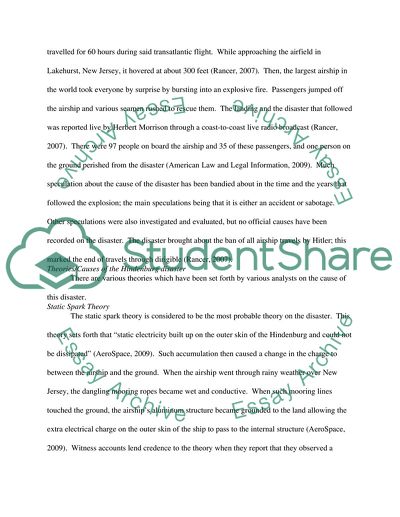Cite this document
(Accidents and Catastrophes: The Hindenburg Disaster Article - 5, n.d.)
Accidents and Catastrophes: The Hindenburg Disaster Article - 5. Retrieved from https://studentshare.org/environmental-studies/1730468-accidents-and-catastrophes
Accidents and Catastrophes: The Hindenburg Disaster Article - 5. Retrieved from https://studentshare.org/environmental-studies/1730468-accidents-and-catastrophes
(Accidents and Catastrophes: The Hindenburg Disaster Article - 5)
Accidents and Catastrophes: The Hindenburg Disaster Article - 5. https://studentshare.org/environmental-studies/1730468-accidents-and-catastrophes.
Accidents and Catastrophes: The Hindenburg Disaster Article - 5. https://studentshare.org/environmental-studies/1730468-accidents-and-catastrophes.
“Accidents and Catastrophes: The Hindenburg Disaster Article - 5”, n.d. https://studentshare.org/environmental-studies/1730468-accidents-and-catastrophes.


